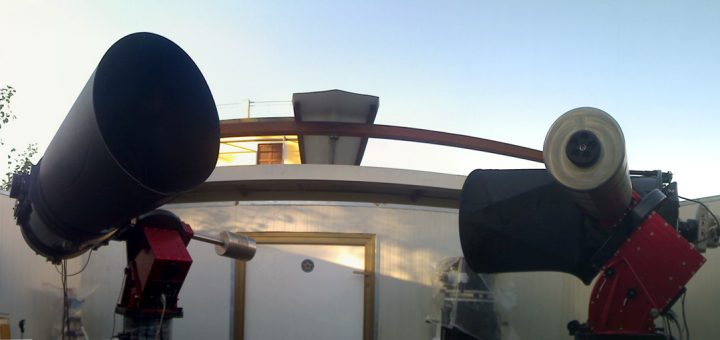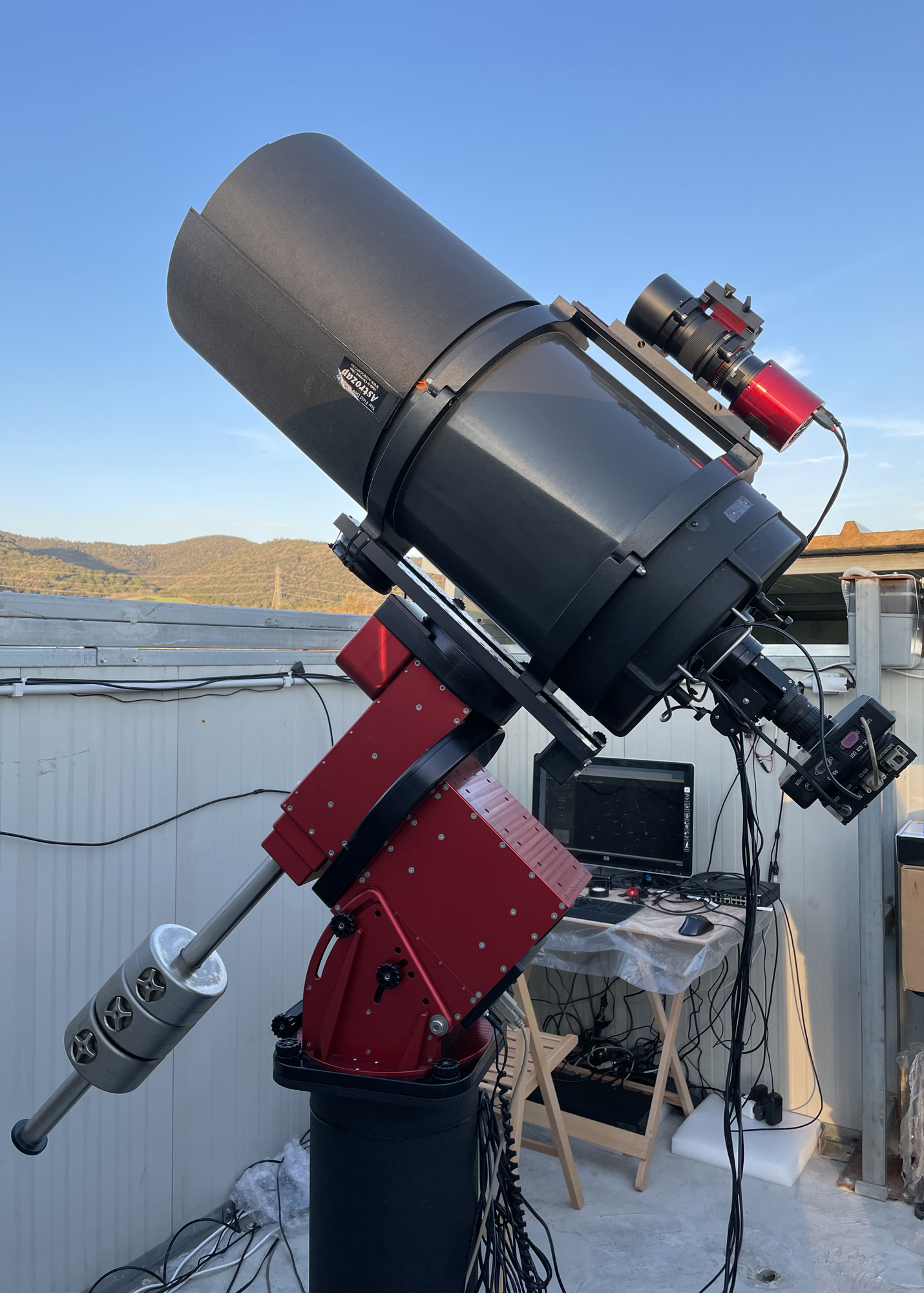
Another instrument available at the Virtual Telescope is the Celestron 14″ – f/6.9 (356/2470 mm) Schmidt-Cassegrain telescope.
After more than 10 years of activity and a few ones of stop, we moved this unit under one of the best skies in Italy, offering a SQM better than 21.5. It mainly works in high precision photometry of cataclysmic variable stars and transiting exoplanets.
The tube is installed on a Paramount ME robotic mount, the best hardware of this kind available in the world. As for the detector, we used a SBIG ST-8XME (class 1) CCD camera until Feb. 2025, then we installed a ST-10XME camera, having even better specs. A filter wheel offers the following filters: RGB (for color imaging), BVRI (for standard photometry) and H-alpha (bandwidth: 6nm) for narrowband imaging. Unfiltered images are also possible, to offer the maximum amount of light for extremely faint objects. The image scale is of 0.75″/pixel: high resolution images of deep sky objects are well possible. The field of view (FOV) is of 19 x 13 arcminutes. An advanced 0.63X reducer/corrector is used to get the mentioned FOV and a better correction.
This unit also offers a Star Analyzer 200 (introduced in 2023, after many years with a SA100) grating, for spectroscopy!
The large aperture make possible very deep imaging, useful to detect really faint objects, like small asteroids or faint variable stars. The period error is of about 1″ peak-to-peak, so unguided exposures are easily possible at full resolution with integration time of five minutes or so. This is very important for survey works, where saving the time otherwise needed to look for a suitable guiding star means more observing and discovering chances. The pointing accuracy shows a better than 8″ RMS all-sky error. The whole system is controlled by the state-of-the-art TheSkyX suite, with TPoint and Camera add-ons.
Some applications: the system can taking amazing, highly resolved images of moderately large objects, while the large aperture makes possible good time-resolved photometry on stars down to mag. 18 and astrometry of objects down to mag 23.
The Minor Planet Center’s observatory code associated to our facility in Manciano, Italy, is M50 – Virtual Telescope Project.
Weather conditions are available here.
Support The Virtual Telescope Project!
Support us! Please, donate and receive an EXCLUSIVE image of the stunning COMET C/2023 A3 Tsuchinshan-ATLAS and much more, specifically made for supporters like you!
![]()








